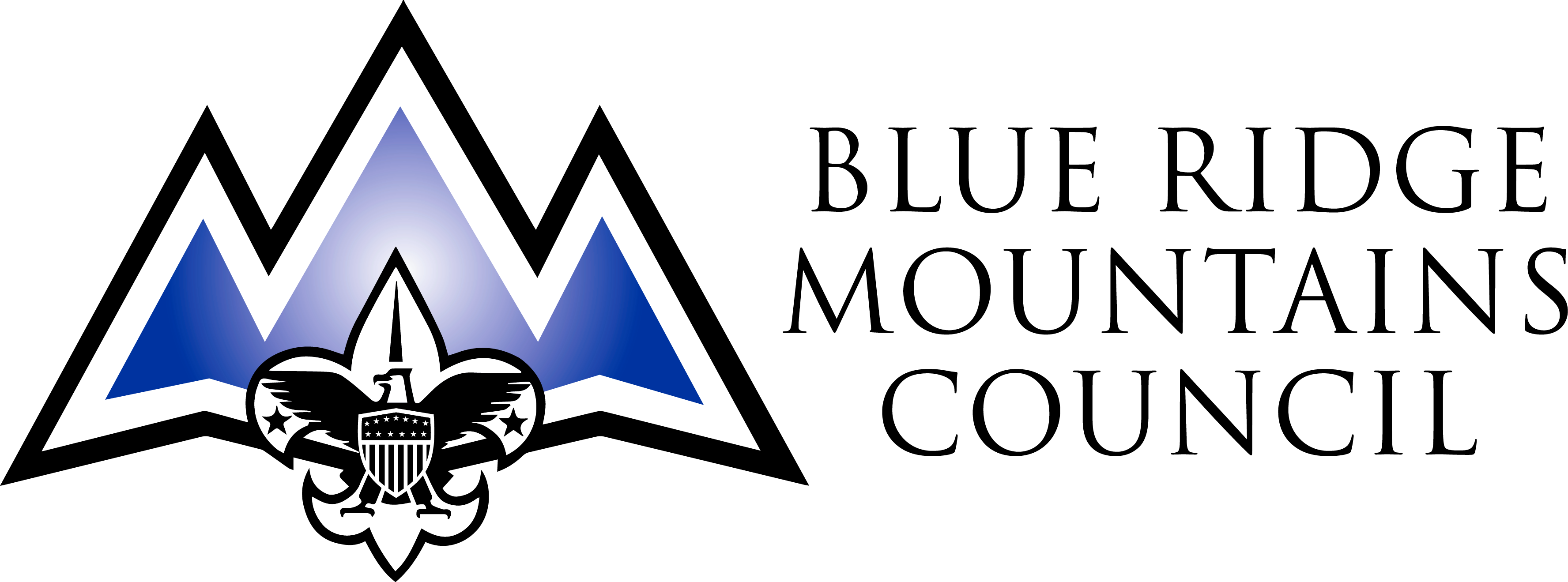About Us
As the largest council-owned camp in the US, and with a rich history dating back to 1919, the Blue Ridge Scout Reservation offers two base camps, an aquatics base, three high-adventure programs, a living-history camp, over eighty miles of hiking trails, off-season camping, hunting, fishing, and special event venues.
Camp Powhatan
2600 Max Creek Rd. Hiwassee, VA 24347 (540) 980-3787
Camp Ottari
2881 Simpkinstown Rd, Hiwassee, VA 24347 (540) 980-4762
Claytor Lake Aquatics
4100 Adventure Base Rd, Radford, VA 24141 (540) 633-1238
BRMC Headquarters
805 Winona Ave SW, Roanoke, VA 24015 (540) 265-0656
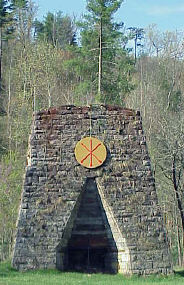
The Iron Furnace at Camp Powhatan with the emblem of its Order of the Arrow service Lodge, Tutelo Lodge 161.
A Brief History of the Blue Ridge Scout Reservation
To fully appreciate the evolution of the Blue Ridge Scout Reservation, we must take you back to the year 1919. Just nine years after scouting was founded in the US, the newly formed Blue Ridge Council, which included most of Southwestern VA, opened a scout camp on a 40-acre tract near Natural Bridge, VA and named it Camp Powhatan. Consisting of a dining hall, several sleeping shelters and primitive adirondacks, “old” Camp Powhatan ran a summer camping program until 1949, when the council purchased 400 acres on Macks Creek in Pulaski County.
This land was set in the middle of a 15,000-acre tract owned by Radford College, who had acquired the land in 1934 from the family of R.D. Wood and Sons, an iron mining operation that dated back to the Civil War. (The old “Iron Furnace” used for smelting iron ore stills stands at the entrance to camp)
Concert Organ
When Radford College decided to sell their acreage to buy a concert organ for their music program (so the story goes), the Blue Ridge Council purchased it, plus another 216 adjoining acres. With close to 16,000 total acreage and spanning four counties, this “new” Camp Powhatan then became the 2nd largest Boy Scout Camp in the world, (Philmont Scout Ranch being the first), as well as the largest council-owned scout camp in the world.
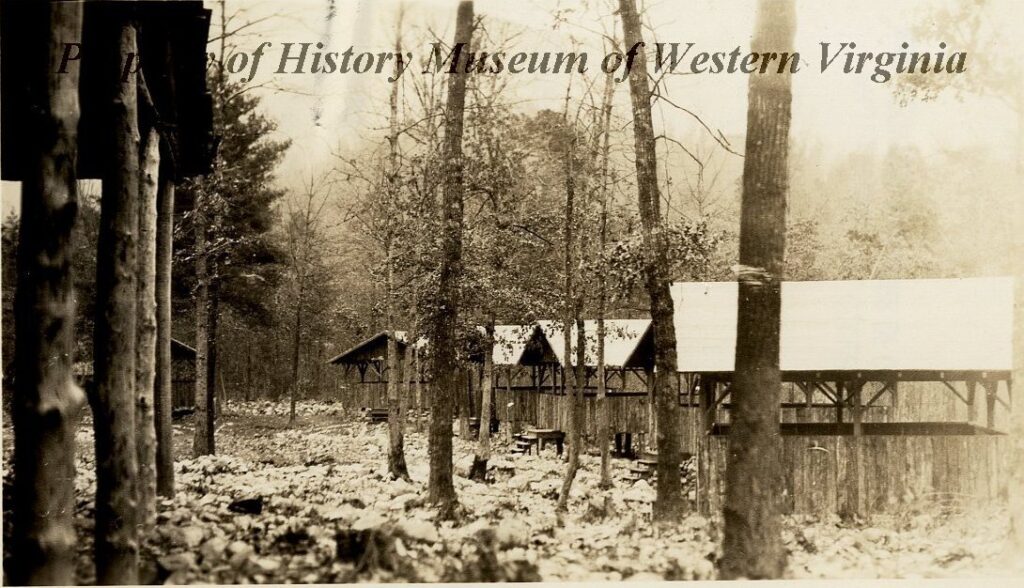
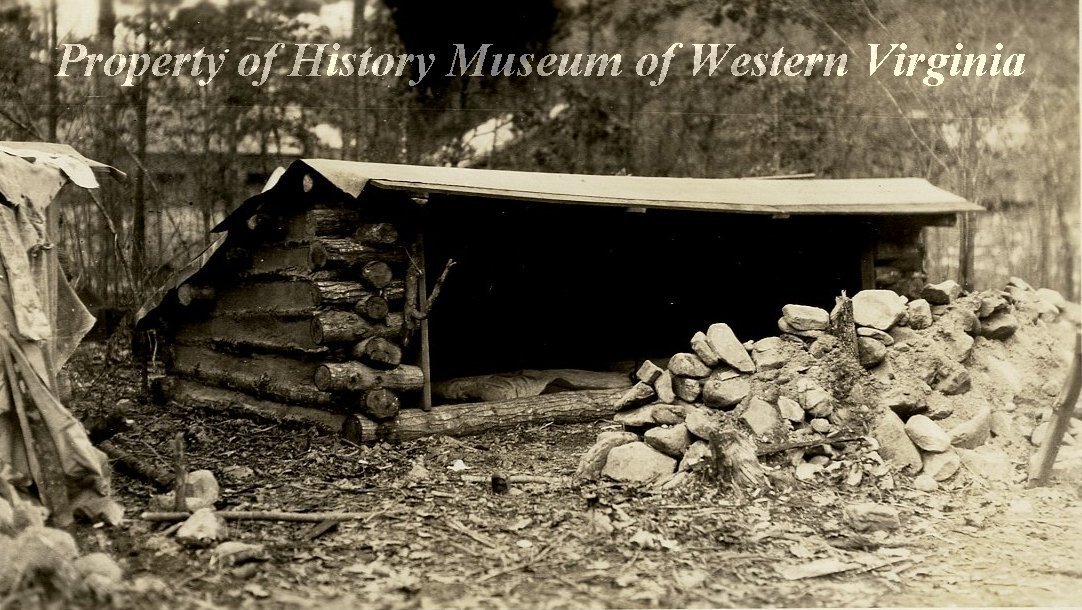
Down the Road a Piece
“Down the road a piece” from the Blue Ridge Council was the Piedmont Area Council, encompassing Central and Southside VA. In 1946, the Piedmont Area Council acquired a 400-acre tract of land, this one in Nelson County, VA near Nellysford. Named Camp Monocan after the local Monocan Indian tribe, Camp Monocan served as the Piedmont Area Council’s home camp for twenty-five years.
Camp Monocan
Throughout the 1950’s-1960’s, Camp Monocan was a pioneer in land management in wildlife conservation efforts. The camp was designated as a wildlife refuge, and created a conservation award that campers could earn through projects such as developing wildlife habitat and planting native forage crops for resident fauna.
In 1971, Camp Monocan was sold to BLM Corporation, a real estate investment group who had already purchased over 13,000 acres in the surrounding area. The group had their sights set on Camp Monocan’s 10-acre Deer Lake to provide water for their snow-making machines at their new, nearby mountain ski resort, Wintergreen.
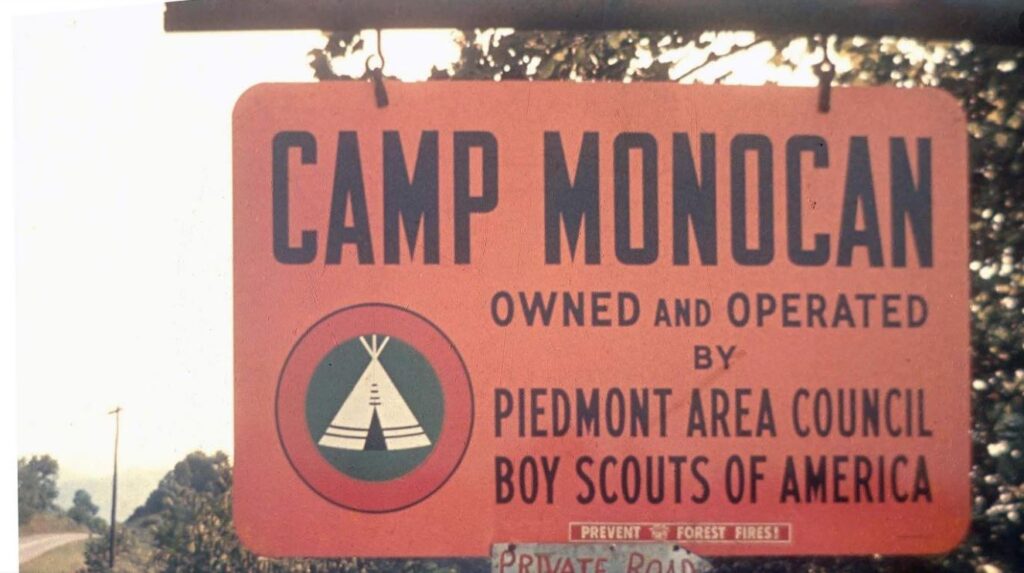
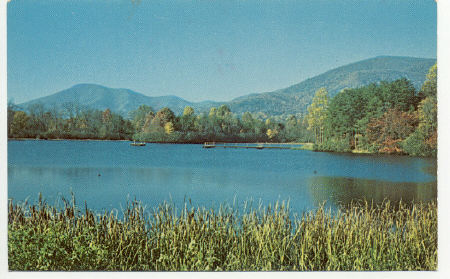
Following Camp Monocan’s sale, the Blue Ridge Council in Roanoke offered the Piedmont Area Council use of its second base camp, Camp Ottari, which had been in operation for about ten years. In March 1972, it was announced that the Blue Ridge Council and Piedmont Area Council would merge, creating the present Blue Ridge Mountains Council in 1973.
Today, the Blue Ridge Scout Reservation remains the second largest Boy Scout Camp in the nation, and the largest council-owned property. BRSR consists of two base camps, an aquatics center at nearby Claytor Lake, a living-history rendezvous experience, and at present, three high-adventure camps offering white-water rafting, canoeing and kayaking on the New River, caving, natural rock climbing, ATV back-country excursions, and over eighty-five miles of hiking trails.
*Note: Remnants of Old Camp Powhatan and Camp Monocan*
Remnants of the “old” Camp Powhatan at Natural Bridge, including the swimming pool foundation, several building foundations, and two entrance pillars, can still be seen by hiking the Belfast Trail in the Jefferson National Forest in Bedford County on the south side of the James River near Glasgow. One of the name plaques is still intact on an entrance pillar, while the other was installed on a replica pillar at the “new” Camp Powhatan in Pulaski.
The old dining hall of Camp Monocan now serves as the clubhouse for Lake Monocan at Wintergreen, and the health lodge is used for storage. An original staff cabin still stands on private property near the resort.
